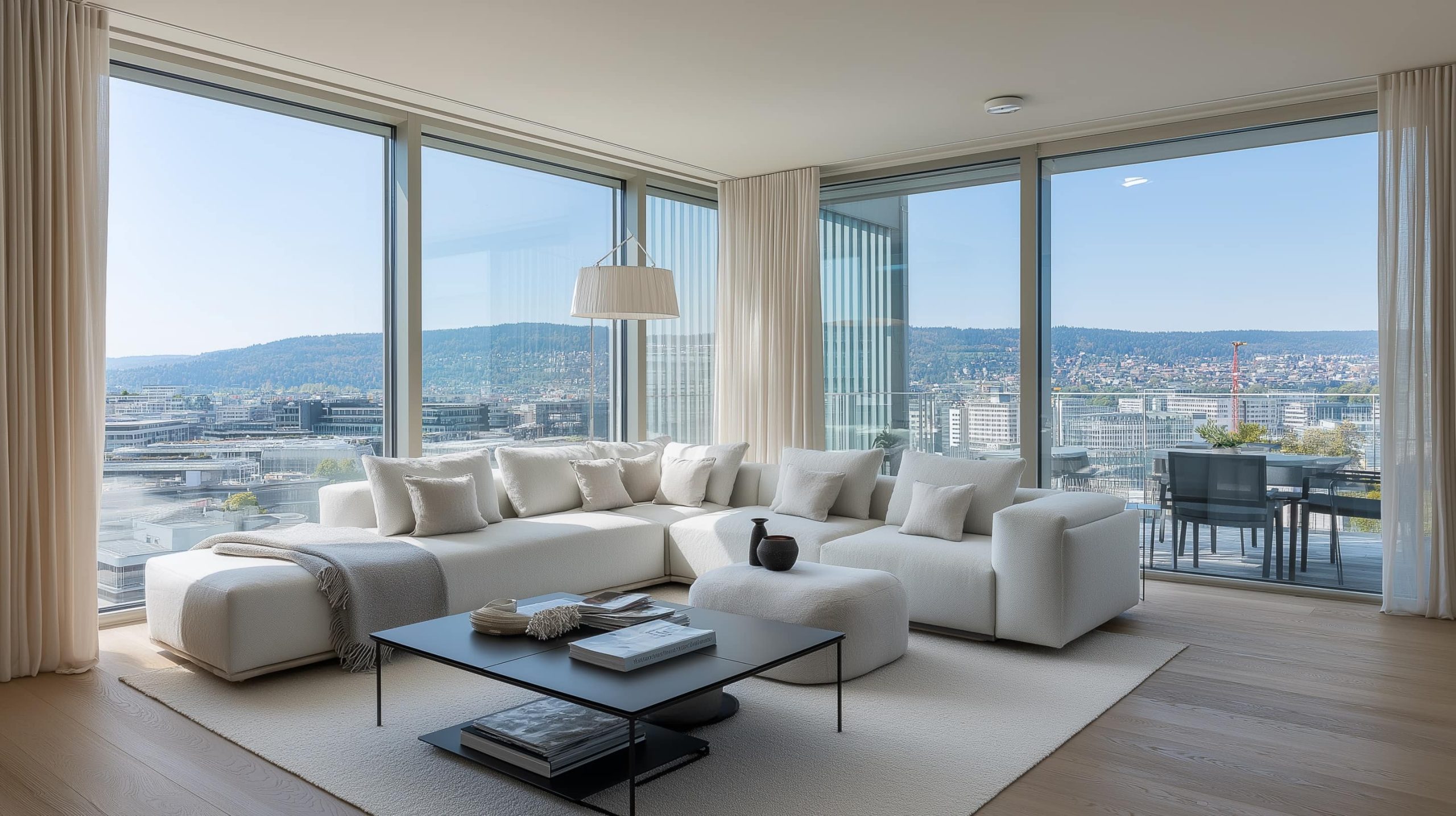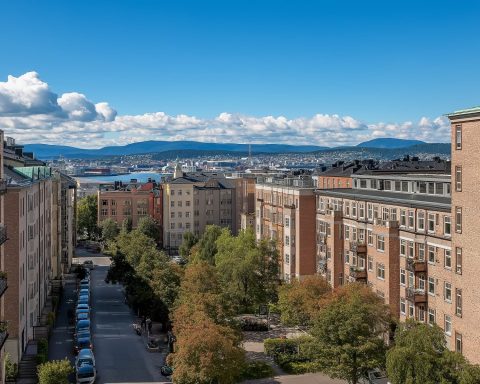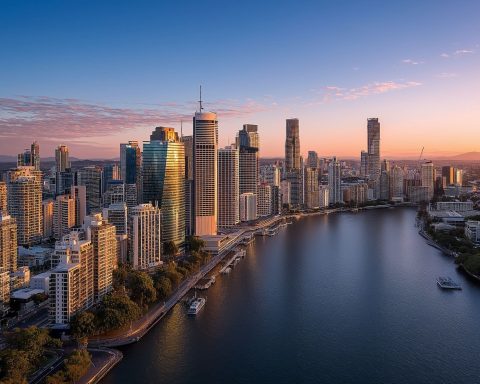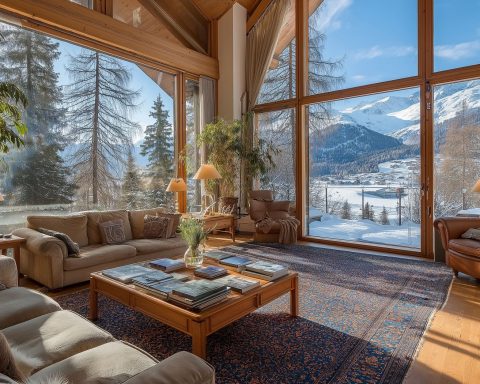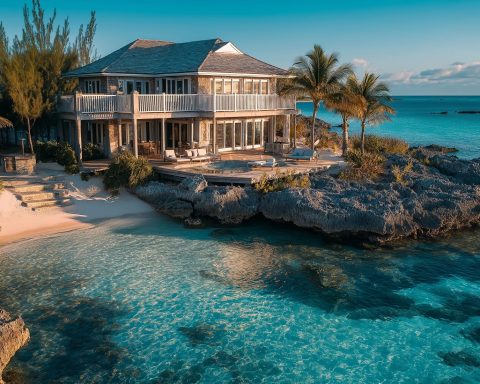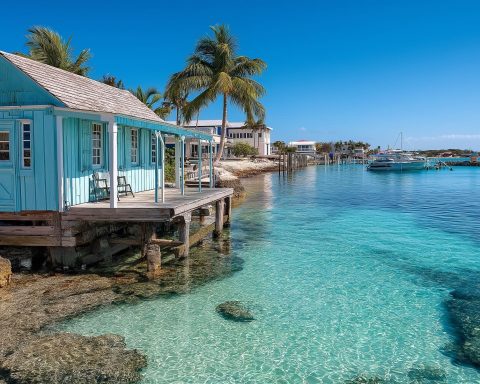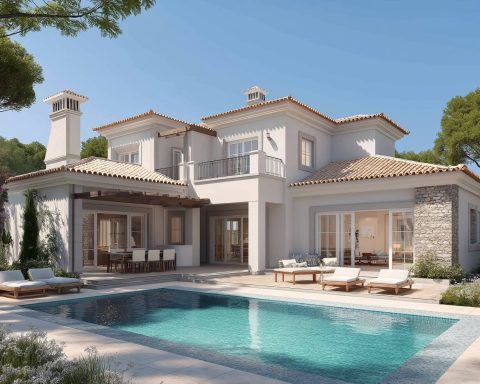Residential Market Trends in 2025
Surging Prices Amid Chronic Housing Shortage: Zurich’s housing market remains exceptionally tight in 2025. Property prices are still climbing on strong demand and scarce supply. As of mid-2025, apartment prices in the city are up ~4.5% year-on-year (single-family homes +4.0%) investropa.com. The median apartment now costs around CHF 1.68 million, with average prices ranging CHF 14,000–21,000 per m² depending on the district investropa.com investropa.com. Zurich’s vacancy rate hit a record low of 0.07% – just 7 out of 10,000 units – the lowest in Switzerland and likely all of Western Europe swissinfo.ch. In other words, virtually every apartment is occupied, reflecting a chronic housing shortage. New construction has lagged far behind population growth (only ~42,000 new flats expected nationwide in 2025 versus ~50,000 needed swissinfo.ch), so competition for homes remains fierce. Unsurprisingly, selling prices continue to rise – Swiss analysts forecast +3% to +4% annual growth for Zurich home values through 2025 engelvoelkers.com. Barring an economic shock, significant price dips appear unlikely as long as demand so sharply outstrips supply investropa.com investropa.com.
Rental Market vs Buying Dynamics: Zurich’s rentals are also soaring, further shifting the buy-versus-rent calculus. After a double-digit jump in 2023, asking rents in the city rose another 4.5% in 2024 swissmarketplace.group. Rents across Canton Zurich climbed ~4.8% last year swissmarketplace.group, even as increases moderated from 2023’s spike. This trend is expected to continue in 2025 – demand keeps climbing (thanks to immigration and new household formation) while vacancy is effectively zero, and new supply remains minimal swissmarketplace.group. In short, tenants face steep competition and rising costs. Meanwhile, borrowing has become cheaper: The Swiss National Bank cut its policy rate to 0.25% in early 2025 investropa.com, easing mortgage rates. With interest costs down and rents up, owning is now often more affordable than renting for long-term residents investropa.com. In fact, UBS research indicates that by early 2025, homeownership costs dipped below rent levels in most Swiss regions (the renter’s cost advantage has shrunk to ~3% or vanished entirely) investropa.com. In Zurich and Geneva, renting still makes sense for short stays under 5 years due to sky-high purchase prices investropa.com. But for those staying long-term and able to finance a home, buying has regained appeal. Real estate firms note that sharply rising rents combined with lower financing costs are tilting the math in favor of buying over renting for the first time in years engelvoelkers.com. This dynamic – unprecedented rental pressure vs. improved mortgage conditions – is a key theme of 2025’s market.
Demand, Demographics and Supply Crunch: Multiple forces sustain Zurich’s red-hot housing demand. The city’s economy is thriving, with over 120,000 companies (including global banks, insurers, and a booming tech/biotech sector) drawing workers to the area investropa.com. Immigration remains robust – Switzerland gained ~83,000 net people in 2024 swissinfo.ch, and Zurich’s population keeps growing, fueling housing needs. At the same time, new housing construction is falling short. Higher building costs, labor shortages, and recent interest rate hikes slowed development starts swissinfo.ch. Land is limited by geography and strict zoning, especially in desirable central districts. Owners are also reluctant to sell, so the secondhand supply on the market is thin engelvoelkers.com. Consequently, Zurich’s housing availability is far below the 1% vacancy threshold that defines a shortage swissinfo.ch. Even modest apartments routinely attract dozens of applicants. This supply-demand imbalance is unlikely to resolve soon – the Swiss Contractors’ Association warns vacancy rates will dip even lower nationally as construction lags demand in coming years swissinfo.ch. The upshot is persistent upward pressure on both prices and rents. Indeed, experts describe Zurich as the “world capital of housing shortages” given its extreme scarcity of rentals swissinfo.ch. For now, Zurich’s residential market remains fundamentally tight and resilient, buoyed by the city’s strong economy and desirability. Barring a major shift, analysts expect continued price stability and moderate growth into the next few years engelvoelkers.com investropa.com, even as affordability for locals becomes an ever greater concern.
Commercial Property Market: Offices, Retail and Industrial
Office Sector – Stable with High Availability
Zurich’s office market in 2025 presents a mixed picture of ample supply and selective demand. After the pandemic, office vacancies rose as remote/hybrid work took hold, but the trend is stabilizing. Across Switzerland’s five largest office hubs (Zurich, Geneva, Basel, Bern, Lausanne), the aggregate availability rate was ~5.0% at end-2024 jll.com. In the Zurich region specifically, available office space expanded to 433,700 m² (a 5.3% vacancy rate) by late 2024 jll.com. This is up slightly from 4.8% a year prior, continuing a gradual rise since 2019 jll.com. New completions in peripheral areas have contributed to vacancies – for example, fresh projects in Oerlikon and Kloten (north Zurich) added significant space last year jll.com. District 5 (Zürich-West) and District 11 (Oerlikon/Affoltern) also saw notable new supply and renovated offices come to market jll.com. By contrast, some central areas absorbed space (vacancy fell in Districts 1, 3 and 9) as businesses sought prime locations jll.com. Headline office rents have been flat for several years, reflecting this balance of increased supply and steady demand jll.com. Prime office rents in central Zurich have held constant since 2022, though this may change soon. High-end, sustainable office projects in the pipeline (with green building certifications and modern amenities) are attracting tenants, and if demand for these premium spaces stays robust while supply remains limited, prime rents could finally tick up after a period of stagnation jll.com.
Looking ahead, Zurich’s office outlook is cautiously optimistic. New construction of offices is slowing dramatically – only ~57,000 m² completed in 2024, down from 343,000 m² in 2020 jll.com. Between 2025 and 2027, Zurich’s pipeline averages just 29,000 m² per year, a fraction (about –71%) of the annual volume built in 2019–2023 jll.com. This sharp drop in new supply will help counteract further vacancy increases jll.com. However, some second-hand space is still coming free as companies optimize footprints; roughly 60,000 m² of existing offices are expected to hit the market in 2025–26 (likely subleases or older buildings being vacated) jll.com. Thus, vacancy rates should hover around the 5%+ level near-term jll.com. Tenant demand is focused on quality: modern, well-located offices (especially those with ESG credentials) lease up well, whereas outdated offices in fringe locations linger. Notably, Zurich’s financial and tech sectors continue to drive leasing. Several big moves in late 2024 underscore confidence in top locations – e.g. Salt telecom took a new flagship office above Bahnhofstrasse, asset manager Bellevue Group relocated to a refurbished prime building by Sechseläutenplatz jll.com. With Switzerland’s low unemployment (2.5%) and GDP growth ~1.2% engelvoelkers.com, companies are still expanding headcount, albeit cautiously. Overall, Zurich’s office market is well-balanced: tenants benefit from more choice and flat rents, while landlords take comfort that the construction lull will gradually tighten the market. Any uptick in demand (for example, if companies bring more staff back on-site) could quickly firm up rents in core areas. For now, expect stable office rents with flight-to-quality dynamics – aging offices may offer concessions, while green premium offices in the CBD and booming submarkets (like Zürich-West and Oerlikon) see solid interest.
Retail Sector – Prime Shopping Stays Strong
Retail real estate in Zurich has proven remarkably resilient. In fact, the city’s premier shopping street, Bahnhofstrasse, remains one of the most expensive retail locations in the world. Prime rents for high-street retail have climbed over 20% since 2020, reaching around CHF 10,250 per m² per year by end-2024 jll.com. This puts Zurich’s flagship street behind only Paris and London in Europe for retail rental costs jll.com. Such high rents reflect intense demand from luxury brands and retailers for limited storefronts. Vacancy on Bahnhofstrasse is effectively 0% jll.com – any available shop is snapped up immediately. In recent years, several global brands have upgraded to larger flagships or entered the street, keeping occupancy full. Zurich’s status as a wealthy global city underpins this: it leads Europe in purchasing power per capita, which strongly supports retail spending jll.com. Steady streams of tourists, business travelers, and high-net-worth residents ensure continued sales in luxury boutiques, watches/jewelry, and high-end fashion. Even as e-commerce grows, the experience and prestige of a Bahnhofstrasse presence remains irreplaceable for retailers. The story is similar in other prime areas like Old Town and Seefeld’s boutique districts – demand is healthy and vacancies minimal.
That said, secondary retail locations face a more nuanced picture. Some side streets and less central malls have had to reposition post-COVID, and mid-market retailers are mindful of online competition. Overall foot traffic in Zurich rebounded with the return of tourists and office workers, but shoppers now expect more than just stores – successful retail spots offer experiences (cafés, events) and convenience. Still, relative to many cities, Zurich’s retail sector is faring well. Consumer confidence is supported by Switzerland’s low inflation and rising wages, and unemployment is very low. High street landlords achieved record rents in 2024 jll.com, indicating strong retailer confidence in bricks-and-mortar presence here. As a result, investors remain keen on prime retail assets, which offer stable income (though yields are low given the price levels). Looking forward, retail performance will likely diverge by segment: ultra-prime will continue to thrive, while weaker locations must innovate. If tourism from Asia and the US grows in coming years, it will further boost central retail. Conversely, any dip in consumer spending or new e-commerce habits could pressure the less prime shops. For now, Zurich’s retail real estate is a tale of strength at the top – “Location, location, location” holds true, with Bahnhofstrasse commanding global-high rents and zero vacancy due to unrelenting demand jll.com.
Industrial & Logistics – High Demand, Limited Supply
The industrial and logistics property segment in the Zurich region (and Switzerland broadly) is seeing robust demand and tightening vacancy. As of 2023, the vacancy rate for investable logistics properties nationwide dropped to about 5.1%, down from 7.7% in 2019 jll.com. In other words, warehouses and distribution facilities are increasingly occupied, thanks to the rise of e-commerce, supply chain reconfiguration, and companies holding more inventory. The geography of Swiss logistics concentrates along key transport corridors – a large share of facilities lie in the Basel–Zurich–Solothurn triangle and around major metro areas jll.com. Zurich, sitting on the crossroads of highways and near the airport, is a prime logistics hub but also space-constrained. Much industrial land has been redeveloped into offices or housing (especially in Zurich city), limiting new warehouse supply. Many existing warehouses are older and not perfectly suited to modern needs (e.g. lower clear heights, fewer loading docks) jll.com, which means grade A logistics space is extremely scarce.
Rents for logistics/industrial space in the Zurich area typically range from roughly CHF 85 to 140 per m² per year, depending on size and location jll.com. These rents are relatively high by international standards (reflecting high Swiss land and construction costs). Rent growth has been moderate but steady as vacancy falls. Investors are increasingly interested in this asset class for its income stability and growth potential – logistics yields, while low in Switzerland (~4–5%), are slightly higher than prime office yields. Notably, most logistics real estate in Switzerland is owner-occupied (companies owning their warehouses) jll.com. Only ~300 logistics properties nationally are leased investment assets jll.com. This adds to the illiquidity and exclusivity of the sector. Those few investment-grade warehouses that do hit the market attract strong competition, including foreign institutional buyers drawn by Switzerland’s stability.
For the coming years, expect logistics development to remain constrained. Suitable land around Zurich for new big-box warehouses is limited and heavily regulated. However, some industrial zones on city outskirts and along the A1 highway are being intensified – older sites might get multi-story logistics facilities or be subdivided for urban “last-mile” distribution. The trend of nearshoring (more inventory storage within Switzerland) and the boom in online shopping will keep demand high for modern logistics space. As a result, vacancy could compress further, and rents may inch up, especially for prime warehouse units. One challenge is retrofitting obsolete stock – many older industrial buildings don’t meet current logistics requirements jll.com. Creative solutions like converting parts of them to self-storage or SME units are being tried to reduce vacancies jll.com. Overall, Zurich’s industrial real estate outlook is positive, marked by scarcity and solid demand. This niche may not grab headlines like Zurich’s housing or offices, but it offers emerging opportunities for investors who can navigate the zoning and find assets – the fundamentals of low vacancy and steady rental need are firmly in place jll.com.
Investment Outlook: Returns, Foreign Interest & Opportunities
Stable Returns in a Low-Yield Market: Zurich real estate is prized as a “safe haven” investment, offering stability over high yields. In 2025, prime residential and office assets in Zurich typically yield only around 2.5%–3.5% annually (gross) foxstone.ch. These yields are modest, reflecting the high valuations and low risk of Swiss property. For institutional investors like pension funds and insurance companies, Zurich real estate’s reliability and capital preservation make it a core holding. In fact, major owners report steady or rising values – for example, Swiss Life (one of Switzerland’s largest property investors) noted its portfolio’s fair values rose ~0.2% in Q1 2025, bucking any downturn reuters.com. Rental income streams are viewed as rock-solid given full occupancies and strong tenant credit in Zurich. Total returns going forward are expected to come mainly from income plus mild capital appreciation (forecast ~1–4% annual price growth in coming years investropa.com). International investors also remain attracted despite the low yields because of Switzerland’s safe-haven status. During times of global uncertainty, Zurich property draws foreign buyers seeking wealth preservation investropa.com. The strong Swiss franc and the country’s political stability add to the appeal.
Foreign Investment and Regulations: It’s important to note that Switzerland maintains strict rules (Lex Koller) limiting foreign ownership of residential real estate. Non-resident foreigners generally cannot buy homes in Zurich (except in rare cases or via certain exempted structures) practiceguides.chambers.com jacquemoudstanislas.ch. However, foreigners can invest in commercial properties freely, and until now could also buy shares in Swiss real estate companies or funds without restriction jacquemoudstanislas.ch jacquemoudstanislas.ch. This has allowed foreign institutional capital to indirectly enter Zurich’s market. There is significant global interest – sovereign wealth funds, global REITs, and private investors have poured money into Swiss real estate funds, development projects, and commercial asset acquisitions. For example, Zurich’s trophy office buildings and retail properties often see bidding by German funds or Middle Eastern investors. Going forward, though, the regulatory landscape may tighten. In March 2025 the Swiss government announced plans to further restrict foreign real estate purchases, potentially ending the exemption that let foreigners freely buy shares of listed property companies jacquemoudstanislas.ch. If implemented, such reforms (currently under discussion) would require government approval for foreign investors even for indirect real estate stakes, a major shift aimed at cooling demand jacquemoudstanislas.ch jacquemoudstanislas.ch. This has raised concerns that overseas capital might be deterred. Still, the legislative process is ongoing – any changes will take time and could be watered down jacquemoudstanislas.ch jacquemoudstanislas.ch. For now, foreign investor interest remains high, especially for commercial assets and development partnerships.
Emerging Opportunities – Green and Niche Segments: Investors are also eyeing new niches and value-add plays in Zurich’s market. One big theme is sustainability. There is growing demand (from tenants and buyers) for eco-friendly, energy-efficient buildings, and properties with green certifications can command premiums investropa.com. The government’s push for carbon reduction – e.g. a new law mandates solar panels on most new buildings pv-magazine.com – will require retrofitting older stock and developing renewable energy infrastructure. This creates opportunities for investors to reposition aging buildings with insulation upgrades, heat pumps, solar installations, etc., adding value while complying with green regulations. Another trend is technology and PropTech in real estate: smart-home features, digital tenant services, and data analytics are adding value to properties (particularly appealing to tech-savvy tenants in Zurich’s market) investropa.com.
Certain property sectors also present growth potential. Logistics and life-science facilities are in demand but in short supply – converting or developing light-industrial spaces on the metro fringe for last-mile logistics or lab/research use is a promising avenue. Residential development in “B” locations around Zurich is another opportunity: with city-center affordability so strained, areas in outer boroughs or commuting towns are booming (investors target these for new rental housing where yields can be a bit higher) foxstone.ch. Indeed, suburban regions with good transit links are emerging investment hubs, as renters seek relatively affordable options outside the city core foxstone.ch. Additionally, alternative residential models are gaining traction: co-living and co-operative housing. Zurich has a strong tradition of non-profit housing co-ops, and the city is encouraging this sector (aiming for 33% of housing to be non-profit by 2050) digitalcollection.zhaw.ch. While not profit-maximizing, co-op development offers stable, long-term returns and often involves public-private collaboration on city land – institutional investors like pension funds are cautiously investing in such projects as a ESG-friendly strategy. On the private side, co-living spaces that offer flexible leasing and communal amenities appeal to young professionals and expats, representing a niche to watch.
Return Outlook: Overall, investors can expect moderate but reliable returns from Zurich real estate in the next few years. Prime residential and commercial assets might yield on the order of 3% annually in cash flow foxstone.ch, plus a few percent in capital appreciation – not spectacular, but in line with Switzerland’s low-risk profile. Those seeking higher returns are looking at value-add strategies (e.g. renovating older apartments to sell into the homeownership market, given strong buyer demand) or development (though high construction costs and regs make this challenging in Zurich). Platforms like real estate crowdfunding have also entered the scene (e.g. Foxstone, Crowdhouse), allowing investors to take on slightly more risk for target returns in the 5–7% range via diversified property portfolios foxstone.ch. Interest from abroad is likely to persist for core assets, unless new laws severely curtail it. In summary, Zurich’s investment outlook remains positive yet competitive – the market’s stability and scarcity suggest values will hold firm, but investors must be creative to find yield. Key opportunities lie in sustainability upgrades, meeting housing demand in underserved segments, and leveraging Zurich’s continued growth while navigating an evolving regulatory environment.
Key Neighborhoods and Property Hotspots
Zurich is a city of diverse districts, each with its own character and real estate trends. Below we highlight several key neighborhoods – from ultra-prime lakeside quarters to up-and-coming urban pockets – including their price levels, popularity drivers, development projects, and livability factors:
- Enge (District 2) – Luxury Lakeside Living. Enge, on the south side of central Zurich, has become a magnet for high-end apartments and affluent professionals. Prices here average around CHF 18,300 per m² investropa.com, among the highest in the city. Recent luxury developments (with perks like private gyms and concierge services) are drawing wealthy expats and tech executives to Enge investropa.com. The area’s appeal lies in its prime location – walking distance to the CBD, hugging the lakefront, and home to amenities like Rieter Park and the Museum Bärengasse. Livability is excellent: Enge offers upscale shopping, international schools, and a short commute to finance center Paradeplatz. With new premium projects still in the pipeline, Enge’s exclusivity – and high prices – are set to endure investropa.com.
- Seefeld (District 8) – Lake Zurich’s Most Wanted. Seefeld is an extremely sought-after neighborhood east of the city center, prized for its proximity to Lake Zurich, trendy restaurants, and lively atmosphere. Properties here command top-tier prices (among the highest per m² in Zurich) and experience fierce demand investropa.com. Vacancy is virtually nonexistent – everyone wants to live in Seefeld. Despite low rental yields of ~2–3% (a sign of very high capital values), the consistently low vacancy and premium rents underscore the area’s desirability investropa.com. Seefeld offers a mix of elegant historic buildings and modern apartments, many with lake views. Residents enjoy waterfront leisure, green spaces like Zürichhorn park, and boutiques. It’s popular with both wealthy locals and expatriates. With very limited land, Seefeld sees few new developments (aside from occasional luxury condo projects), so supply stays tight. Expect Seefeld to remain a luxury enclave, with outstanding quality of life, and prices to match.
- Fluntern (District 7) – Prestige on the Zürichberg. Fluntern sits on the wooded slopes of the Zürichberg hill and is one of Zurich’s most prestigious residential quarters. It is known for scenic views, luxury villas, and top schools. Families especially covet Fluntern for its elite education options – the neighborhood hosts renowned schools (like the Zurich International School outpost and excellent public primaries) that consistently boast high enrollment. Homes in Fluntern are spacious and often architecturally striking, with many embassies and executives’ residences located here. Property prices are very high (comparable to lake districts) and supply is perpetually scarce – any listing in Fluntern generates immediate interest. The area offers a quiet, green environment (near the zoo and forest trails) yet is only minutes from downtown via tram. Ongoing construction is minimal due to strict zoning protecting the character. In sum, Fluntern delivers privacy, nature, and prestige, keeping it in high demand among Zurich’s elite.
- Zürich West / Kreis 5 (District 5) – From Industrial to Trendy. Kreis 5, also known as Zurich West, has transformed from a gritty industrial zone into one of the city’s trendiest neighborhoods. This ongoing gentrification has driven property values up – average apartment prices here hit about CHF 14,600 per m² in 2024, up 3% year-over-year investropa.com. The area is teeming with new developments: old warehouses have given way to loft apartments, art galleries, tech offices, and nightlife venues. Young professionals and creatives are flocking to Kreis 5 for its edgy vibe and relative affordability compared to downtown investropa.com. The city has actively invested in improving Kreis 5’s livability – adding parks, schools, and cultural spaces to make the district more family-friendly investropa.com. Transport links are excellent (multiple tram lines, nearby Hardbrücke station). With major projects like the Europaallee (just across the tracks) and local redevelopments, the momentum continues. Kreis 5 now boasts some of Zurich’s coolest restaurants, clubs, and design shops, balanced by new community infrastructure. It offers a unique urban lifestyle, and as a result, demand (and prices) are expected to keep rising alongside its ongoing renaissance investropa.com.
- Altstetten (District 9) – Up-and-Coming Urban Hub. Altstetten, in western Zurich, is gaining attention as a more affordable residential area with growth potential. For years it was a primarily industrial/working-class district, but recent changes have been dramatic. Property prices in central Zurich have skyrocketed, “pushing many buyers and renters to explore Altstetten as a budget-friendly option” investropa.com investropa.com. Average prices per m² here are significantly lower than the city center (making it one of the best values in Zurich) investropa.com. At the same time, Altstetten has seen major infrastructure upgrades – notably, the extension of the Limmattal light rail line and other public transport improvements have made commuting from Altstetten to downtown a breeze investropa.com. New residential and mixed-use projects are springing up around Altstetten’s train station and along route corridors. The district now features modern apartments, shopping centers, and office complexes (several major companies have offices in Altstetten’s business parks). With quick transit, cheaper rents/prices, and increasing amenities, Altstetten is evolving into a vibrant secondary center. Many first-time homebuyers and young families are looking here for space they can afford. As more people discover its convenience and value, Altstetten’s profile and property values are on a steady upswing investropa.com.
- Oerlikon (District 11) – Thriving Business-Residential Node. Oerlikon in north Zurich has been one of the city’s biggest development success stories. Thanks to excellent transport links (a major S-Bahn train station, tram and bus hubs) and ample land, Oerlikon has transformed into a booming urban hub. The area is studded with new offices, shopping centers (like the Neumarkt mall), and apartment complexes. This growth is fueling property demand – the median house price in Oerlikon now tops CHF 2.5 million (for larger family homes) and values for all property types are rising investropa.com. Real estate agents report heightened interest as both residents and businesses flock to Oerlikon’s convenient location investropa.com investropa.com. The district’s ongoing development projects are a major draw: multiple high-rises and mixed-use buildings are under construction or recently completed, adding modern housing stock as well as improving local infrastructure investropa.com. At street level, Oerlikon has gained new parks, restaurants, and cultural venues, creating a lively community vibe investropa.com. It’s increasingly self-sufficient – people can live, work, and socialize all within Oerlikon. Given its strategic location (10 minutes by train to central Zurich, and direct rail to Zurich Airport), Oerlikon is a hotspot for both investors and renters. The area is projected to continue thriving, with further upgrades (like a planned innovation campus and sports facilities) in the pipeline. For those seeking strong growth potential in Zurich, Oerlikon offers a compelling combination of connectivity, new development, and comparatively moderate prices (at least relative to downtown and lake districts).
- Affoltern (District 11) – New Infrastructure, New Appeal. Further out in District 11, Affoltern has emerged as a real estate bright spot thanks to infrastructure boosts and reasonable pricing. Recently the Swiss Federal Roads Office invested heavily in new roads and highway expansions around Affoltern investropa.com, greatly improving accessibility. This has put Affoltern on the map for buyers who value easier commutes by car or bus investropa.com. Additionally, Zurich saw a boom in new apartment construction in 2023, especially in areas like Affoltern – the most new units since 2018 were built, signaling developer and buyer interest investropa.com. With these fresh apartments coming online (often at lower price points than inner-city projects), Affoltern is attracting young professionals and families seeking modern housing at competitive prices investropa.com investropa.com. The population in this area is rising accordingly. Affoltern also benefits from adjacent green spaces and a quieter suburban environment, offering a balance of city and country. The city’s plan to possibly extend further public transit to Affoltern will only enhance its appeal. In short, Affoltern is on a positive trajectory: improved connectivity, new housing supply, and still-affordable costs make it a compelling choice for value-focused homebuyers. Its ongoing transformation suggests solid future growth in both community and property values investropa.com.
- Schwamendingen (District 12) – Affordable with Redevelopment Upside. In the north of the city, Schwamendingen has historically been a lower-cost, overlooked neighborhood – but that’s changing. It’s now “gaining attention as a budget-friendly alternative” for those priced out of central Zurich investropa.com. Housing costs here are among the lowest in the city, drawing many first-time buyers and middle-income families. What’s exciting is Schwamendingen’s redevelopment momentum. A flagship project, “Über-Gärten”, is delivering 228 new rental units with innovative design (spacious loggias, shared “forest gardens”) to enhance livability investropa.com. Such projects are revitalizing the housing stock and attracting a more diverse range of residents. Another major improvement is the Schwamendingen Noise Protection Tunnel, a pioneering infrastructure project that covered a section of highway with a “green” enclosure investropa.com. This has dramatically cut noise and pollution in the area, while creating new parkland on top of the tunnel investropa.com. The improved quality of life is palpable – quieter streets, cleaner air, and new green spaces. Together, these efforts signal a strong community investment in Schwamendingen. The neighborhood now offers a balance between affordability and livability that is increasingly rare in Zurich investropa.com. As a result, Schwamendingen is growing in popularity for those seeking value: you get more space for your money, and the area is on an upswing. It’s a prime example of Zurich’s suburbs evolving to meet modern needs. Going forward, expect Schwamendingen’s reputation and real estate demand to keep rising, though it should stay more attainable in price than the city’s elite districts.
Each of these neighborhoods illustrates Zurich’s multi-faceted real estate landscape. The “Gold Coast” and “Silver Coast” communities along Lake Zurich just outside city limits also deserve mention – the Gold Coast (sunny east shore) in towns like Küsnacht and Zollikon remains ultra-prime for villas and can see mansion sales above CHF 10 million investropa.com, while the Silver Coast (west shore, e.g. Thalwil, Horgen) offers slightly more value but is still very upscale. Back in the city, whether one seeks old-world luxury (Enge, Seefeld, Fluntern), edgy urban living (Kreis 5), or upcoming family-friendly zones (Altstetten, Affoltern, Schwamendingen), Zurich’s districts provide it – if you can secure a spot. Notably, all areas share the common thread of limited supply. Even in “affordable” quarters, finding a home isn’t easy. This means price growth is a citywide story, simply at different scales. For investors and homebuyers, being aware of these neighborhood nuances – the latest hot spots versus enduring blue-chips – is key to navigating Zurich’s market.
Infrastructure and Development Projects Shaping the Future
Transportation Upgrades: Zurich continues to invest heavily in infrastructure to support its growth and enhance livability. In recent years, major public transit expansions have been completed or launched. A prime example is the new Limmattal Light Rail line, which opened to connect western districts (Altstetten/Affoltern) with suburbs along the Limmat valley. This tram line extension, along with other tram network improvements, has significantly cut travel times from outer neighborhoods into the city investropa.com. Better connectivity is already boosting areas like Altstetten and Affoltern, as noted earlier, by making them more accessible and attractive to residents and businesses. Further tram extensions and bus lane projects are planned to ensure all districts have strong transit links. Meanwhile, the S-Bahn suburban rail network – the backbone of greater Zurich mobility – is undergoing upgrades. The congested Stadelhofen station is slated for expansion (an additional tunnel and platforms are in the works) to increase rail capacity through central Zurich in coming years. The federal government is also pursuing the “Zürich Brütten Tunnel” project (a new rail tunnel towards Winterthur) to improve intercity connections by the early 2030s. These projects will allow more frequent trains and less crowding, accommodating the metropolitan region’s forecasted population growth.
On the roads front, innovative solutions are improving traffic flow and environment. One notable project is the Schwamendingen highway enclosure (mentioned above), which was completed to cap a noisy autobahn with a landscaped cover investropa.com. This not only reunited neighborhoods split by the highway, but also created a new 1.6 km green park for residents – a win-win for mobility and urban quality of life. The city and canton have similar plans to address other traffic bottlenecks with tunnel or cover options (e.g. discussions on eventually tunneling parts of the Rosengartenstrasse ring road to reduce noise in those dense quarters). Additionally, Zurich’s public transport is going greener: the city is phasing in electric buses and expanding bicycle infrastructure with new bike “superhighways” planned to crisscross the city. All these efforts align with Zurich’s aim to be a model 21st-century transit city, where even outer suburbs are well-connected and sustainable modes are prioritized. Efficient transport infrastructure is crucial for real estate too – it opens up new areas for development and ensures the city can grow without choking on congestion.
Major Development Projects: Several large-scale developments are reshaping Zurich’s urban fabric. Perhaps the most anticipated is the Hardturm “Ensemble” project, which will redevelop the long-vacant Hardturm stadium site in District 5. The project includes a new 18,000-seat football stadium for Zurich’s two soccer clubs, flanked by two high-rise towers and mid-rise buildings providing ~600 new apartments (including affordable housing), plus office and retail space swissinfo.ch. Voters approved this CHF 570 million plan back in 2018 swissinfo.ch, and after years of political wrangling and legal appeals, construction is expected to begin soon. Once realized, it will create an entire new neighborhood hub in western Zurich, addressing both sports infrastructure needs and housing supply. The housing component is significant – one tower is slated to be primarily cooperative/non-profit housing, helping the city inch toward its affordable housing goals swissinfo.ch. While court challenges have delayed the timeline (the project has been “stop-start” with opposition from some quarters) coliseum-online.com swissinfo.ch, the general expectation is that Ensemble will eventually go forward, delivering a modern stadium by the mid/late 2020s and much-needed new flats.
In the city center, the massive Europaallee project (a redevelopment of former rail yards next to Zurich Main Station) recently completed its final phases. Over the past decade, Europaallee delivered new offices (including Google’s large campus), hundreds of apartments, a university campus, and retail promenades – effectively extending the downtown. Its completion in 2020-2021 means no more large vacant plots remain in core Zurich. Attention is now turning to smaller infill and brownfield sites. For instance, in Oerlikon, development is ongoing at sites like Centro (Oerlikon’s center upgrade) and the Andreasturm high-rise that opened in 2018 has been joined by other towers like the Franklin Tower, with more planned around Oerlikon station. In northern Zurich, plans for a new innovation park near Dübendorf (just outside city) are in motion, which will include R&D facilities and possibly housing – leveraging the proximity to ETH and the university.
Zurich’s planners also emphasize sustainable urban redevelopment. Many older industrial sites in the metro area are slated for mixed-use transformation. For example, in the suburbs: the Dietikon area has a major project turning an old industrial zone into a residential quarter with thousands of units, which will indirectly ease Zurich city’s crunch. Within the city, urban renewal in Kreis 4 and 5 (Langstrasse and Zurich West) continues, guided by plans to add green courtyards and community spaces alongside new buildings investropa.com. The city’s 2040 master plan focuses on “Innenentwicklung” – inner development – meaning densifying within existing urban footprint rather than sprawl. This involves up-zoning certain transit-served areas for taller buildings, encouraging mixed-use high-rises in designated zones (for instance, more high-rises will be allowed around Altstetten and Oerlikon). However, Zurich balances this with strict design and environmental standards to preserve the city’s character.
Infrastructure Meets Urban Planning: Another significant initiative is Zurich’s commitment to the 2000-Watt Society and climate goals. The city is rolling out programs to retrofit buildings for energy efficiency, expand district heating networks (often using lake water or waste heat), and require solar panels on new constructions in line with new federal law pv-magazine.com. This green infrastructure push means developers often must integrate solar PV, green roofs, and efficient HVAC into projects – raising upfront costs but improving long-term sustainability. The payoff is a city that remains highly livable, low-pollution, and climate-resilient, which in turn keeps real estate values robust.
Zoning policies are also evolving. The city has signaled plans to protect space for non-profit housing – for example, reserving some public land for cooperatives and writing zoning rules that incentivize affordable units in new projects. A notable target set by voters is to have one-third of all housing stock owned by cooperatives or other non-profits by 2050 digitalcollection.zhaw.ch. This is driving the city to provide land and favorable terms for such developments (e.g. the “Mehr Als Wohnen” cooperative complex in Hunziker Areal, completed a few years ago, is a model to be replicated). Additionally, short-term rental (Airbnb) regulations have been discussed as a way to ensure housing is used for local needs – Zurich is considering limits on renting out apartments to tourists to prevent units being taken off the long-term market, though no strict law is in place yet.
In summary, Zurich’s infrastructure and development pipeline is geared toward smart growth: expanding transport capacity, unlocking new housing in underutilized areas, and enhancing the city’s green and public spaces. Projects like the Hardturm stadium, Schwamendingen tunnel, and new tram lines are emblematic of Zurich’s approach – invest in improvements that serve multiple goals (housing, mobility, environment). These efforts should help Zürich remain highly competitive and livable, which in turn supports the real estate market’s strength. The challenges, of course, are many (from NIMBY opposition to complex Swiss approval processes), but the city’s track record shows gradual, consensus-driven progress. For investors and residents, these developments mean better connectivity, more housing opportunities in certain areas, and a continuous evolution of Zurich’s urban landscape over the next decade.
Regulatory Environment: Taxes, Ownership Rules & Building Codes
Zurich’s real estate operates within Switzerland’s stable but evolving regulatory framework, covering everything from taxes to foreign buyer rules and sustainability mandates. Here are key aspects and changes as of 2025:
Property Taxes and Homeownership Costs: Switzerland’s tax system is generally favorable to property owners, though it has some unique features. There is no federal capital gains tax on private real estate sales held long-term, but the Canton of Zurich (like most cantons) levies its own property gains tax on the sale of real estate, typically on a sliding scale (higher tax if you sell within a few years of purchase, encouraging long-term holding). Zurich also charges a real estate transfer tax (around 1% of price) and notary/land registry fees on transactions practiceguides.chambers.com. Homeowners pay annual wealth tax on the value of their property and importantly, Switzerland imposes an “imputed rental income” tax on owner-occupied homes – essentially taxing owners as if they earned rental income from living in their own house zug4you.ch. Many owners have long disliked this imputed rent tax, and there have been calls to reform or abolish it. In fact, discussions in Bern are ongoing about ending the imputed rental value tax, which could be coupled with eliminating the mortgage interest deduction to balance effects ubs.com. If that reform passes in coming years, it would change the calculus for homeowners (potentially raising net taxes for those with paid-off homes but removing a disincentive to buy). As of 2025, no final decision – but it’s a space to watch. On a positive note for owners, Switzerland’s inflation dipped and the benchmark mortgage rate (which influences allowed rent increases) stayed flat in 2024 swissmarketplace.group, so costs like mortgage interest and inflation-linked maintenance have stabilized. For investors, rental income is taxed as ordinary income (after deducting expenses), and corporate investors benefit from relatively low Swiss corporate tax rates (around 19% in Zurich, set to slightly decrease due to national tax reforms aligning with OECD minimums). Overall, tax laws for real estate are predictable and moderate, with gradual adjustments rather than sudden shifts – one reason the investment climate remains attractive.
Foreign Ownership Rules – Lex Koller: Perhaps the most distinctive regulation is the Lex Koller law, which restricts foreign nationals from buying residential real estate in Switzerland. In Zurich city, this means non-resident foreigners cannot purchase homes or apartments as investments or vacation properties. Only residents (including foreign citizens with Swiss residency permits) are treated like locals in buying property jacquemoudstanislas.ch. There are a few exceptions – e.g. foreigners can buy certain tourist-area holiday homes or take a sizable stake in a listed Swiss real estate fund/company (indirect ownership) without issue jacquemoudstanislas.ch. Commercial properties are also exempt, so foreign companies or individuals can freely buy offices, retail, hotels, etc. These rules have historically kept a lid on international speculation in Swiss housing and ensured the market isn’t dominated by offshore buyers (as seen in some other global cities). However, changes are afoot: the Federal Council (Swiss government) in March 2025 announced plans to tighten the Lex Koller further jacquemoudstanislas.ch. Among proposed reforms, foreigners living in Switzerland could be forced to sell their home if they move away (closing a loophole), and crucially, the current exemption for buying shares in real estate companies would end jacquemoudstanislas.ch. That means foreign investors would need permission even to invest indirectly via a listed property firm or fund – a significant shift. Also proposed: foreign buyers of commercial real estate would be limited to self-use; they could not buy purely to lease out jacquemoudstanislas.ch. These measures are aimed at cooling demand and addressing Switzerland’s housing shortage (part of a broader strategy linked to population growth concerns) jacquemoudstanislas.ch. It’s important to note these are not yet law – a draft is being prepared for parliamentary debate, and heavy pushback is expected from business and real estate groups jacquemoudstanislas.ch jacquemoudstanislas.ch. If such strict rules eventually pass (which is uncertain), it could mark a major change in the legal environment for foreign investment, potentially reducing some inflows of foreign capital. In the meantime, for 2025, the status quo holds: foreign buyers play a limited direct role in Zurich’s housing, but are active in commercial and indirect investments. Anyone looking to invest from abroad should keep abreast of the Lex Koller reform debate, as it could alter investment routes in the near future.
Tenant Protections and Rental Regulations: Zurich, like all of Switzerland, has a renter-friendly regime. Roughly 55-60% of Swiss households rent (even higher in Zurich city), so the laws strike a balance but lean toward protecting tenants. Rents can typically only be raised under certain conditions – for instance, if the national reference interest rate rises or for inflation and value-adding renovations. In 2023, landlords got a rare chance to hike rents because the reference mortgage rate was raised twice (from 1.25% to 1.5%), contributing to the big rent jumps that year swissmarketplace.group. In 2024, that rate held steady, and no new cost shocks like fuel prices occurred, so rent growth slowed to ~4-5% swissmarketplace.group. If the SNB’s recent rate cut eventually causes the reference rate to fall, some tenants could even request rent reductions (though usually there’s a lag). Eviction protections in Switzerland are strong – tenants with long leases can only be evicted for limited reasons like personal use by owner, and even then with significant notice. There’s also a system for tenants to contest excessive rent increases or starting rents as “abusively high” in court, given the low vacancy situation. The Zurich city government has been monitoring the affordable housing situation and is considering whether additional measures (like rent control or more subsidies) are needed if the housing crisis worsens. As of 2025, no new rent control laws have been introduced beyond the existing federal framework, but it’s a political topic to watch, especially as tenant groups have staged protests over steep rent rises and evictions (e.g. the “Sugus” buildings protest in late 2024 swissinfo.ch). Investors should be mindful that rent increases are regulated and political pressure to curb sharp rent hikes is growing amid the shortage.
Green Building and Zoning Regulations: Zurich and Switzerland are pushing forward on environmental regulations for real estate. In June 2024, Swiss voters overwhelmingly approved a new law to accelerate renewable energy adoption pv-magazine.com. One key mandate: all new buildings over 300 m² must install solar panels on roofs or facades from 2025 pv-magazine.com. Canton Zurich can even extend that to smaller buildings. This effectively makes solar energy integration standard practice for new development. Additionally, many cantons (including Zurich) have introduced rules that new heating systems cannot be oil or gas – they must be renewable (heat pump, solar thermal, etc.) or at least meet low-emission standards, especially in new builds and renovations. Zurich city encourages Minergie certification (a Swiss green building label) for new constructions; while not compulsory, many developers adhere to it to streamline permit approval and appeal to eco-conscious buyers. Building codes also enforce high insulation standards, triple-glazed windows, and other energy-efficiency measures in line with Switzerland’s goal to cut building sector emissions. For developers, this means slightly higher construction costs, but also that new Swiss buildings are top-notch in efficiency. Over the next few years, expect increasing retrofitting of older buildings to meet these standards – potentially through government incentives or requirements when major renovations are done.
On the zoning front, Zurich’s urban planners face the challenge of creating more housing and offices without sprawl. Zoning laws have been revised to allow more density in select areas: for example, zones around train stations or transit hubs have been upzoned to allow mid-rise or high-rise projects where low-rise might have been the limit before. The city is also using “Innenentwicklung” strategies – converting underused commercial zones to residential, splitting oversized apartments into smaller ones, etc. A notable zoning initiative is the designation of high-rise zones: Zurich has specific areas where tall buildings (over 40m) are permitted, such as parts of Oerlikon, Escher-Wyss (Zürich-West), and near Altstetten, while the historic center and lakefront have strict height limits. This guided approach aims to concentrate height where infrastructure can support it and preserve sightlines of the cityscape (like the famous view to the Alps).
Another regulatory aspect is the quota for affordable housing/co-ops in new large projects. The city often negotiates that a portion of units in big developments be sold to non-profit housing associations or offered at below-market rents for a period. This is part of reaching the 1/3 non-profit housing target digitalcollection.zhaw.ch. So far, Zurich is at roughly 25% cooperative/non-profit housing, so it will increasingly push for these contributions.
In summary, Zurich’s regulatory environment in 2025 can be characterized as stable but trending toward more intervention to address housing and climate concerns. Taxes remain relatively light and predictable. Foreign buyer rules are tight and may get tighter, though commercial investors still find room. Green regulations are ramping up, making sustainable building practices compulsory. And housing affordability measures – from tenant protections to promoting cooperatives – are expanding gradually to counteract the market’s imbalances. For stakeholders, staying compliant means engaging with these policies: e.g. planning solar installations from the get-go, or structuring investments to align with Lex Koller rules. While such regulations add complexity, they also contribute to Zurich’s long-term appeal – ensuring development is sustainable, speculative bubbles are limited, and the city retains its high quality of life, which ultimately supports real estate values.
Market Risks and Challenges
Despite Zurich’s generally optimistic outlook, several risks and challenges could affect the real estate market in 2025 and the coming years. Investors and observers should keep these factors in mind:
- Interest Rate and Financing Risks: After years of ultra-low interest rates fueling price growth, the environment has shifted. In 2022–2023, the Swiss National Bank aggressively hiked rates from negative territory up to 1.75%, which cooled the market somewhat. By 2025, inflation had eased and SNB pivoted to a small rate cut investropa.com, but the risk remains that rates could rise again if inflation surges or global conditions change. Rising interest rates would directly hit Switzerland’s property market by making mortgages more expensive and reducing buyer affordability, potentially dampening demand investropa.com. Given how high Zurich prices are, they are sensitive to financing costs – a significant uptick in rates could push some would-be buyers out of the market and force price growth to stall or even reverse in overheated segments. Additionally, banks have tightened lending criteria (partly due to Basel III regulations from 2025 that require higher capital buffers foxstone.ch). Borrowers now face strict limits (max ~80% loan-to-value and tough stress tests at 5% interest), which could constrain highly leveraged investors. While current consensus expects a stable or gently falling rate trajectory (with Swiss inflation around only 0.7% engelvoelkers.com), any upside inflation surprise or financial shock could change that. This interest rate uncertainty is a top risk factor to monitor.
- Macroeconomic and Geopolitical Uncertainty: Zurich’s real estate depends on Switzerland’s broader economic health and global stability. Economic uncertainties – such as a potential global or European recession – pose a risk investropa.com. For instance, if a downturn hits the banking or tech sector, Zurich could see job losses or reduced expansion, softening demand for both offices and housing. The city is not immune to global events: the war in Ukraine, energy crises, or other geopolitical tensions can spill over. The Swiss government explicitly noted that the tense geopolitical situation (Ukraine war, Middle East conflicts) remains a latent risk to international trade and energy prices, which could negatively impact the Swiss economy engelvoelkers.com. A spike in oil/gas prices, for example, might reignite inflation and strain consumers and businesses. Additionally, currency fluctuations (a very strong Swiss franc) can hurt Swiss exports and corporate profits, indirectly affecting office occupancy and housing demand from corporate transferees. Another macro factor is immigration policy: Switzerland’s population growth (which drives housing need) could slow if political forces succeed in curbing immigration. The mentioned SVP initiative to cap population at 10 million is extreme, but it indicates political pressure to limit growth jacquemoudstanislas.ch. If immigration were significantly cut, housing demand might slacken in the long term. Overall, while Switzerland’s economy is currently stable, global recession or crisis scenarios represent a downside risk where property vacancies could rise and prices face correction.
- Housing Bubble and Affordability Concerns: Years of price increases have raised the question: Is Zurich in a property bubble? By some measures, yes – it ranks among the cities with high bubble risk. UBS’s Global Real Estate Bubble Index in 2023 still placed Zurich in the “bubble risk” category, one of only two cities globally (alongside Tokyo) at that level ubs.com mattgul.com. Home prices relative to incomes and rents are very stretched. If interest rates were to rise or if demand ebbs, Zurich’s lofty valuations could face a correction. Regulators are mindful of this; the Swiss National Bank reactivated a counter-cyclical capital buffer in recent years to rein in excessive mortgage lending. UBS analysts currently rate the bubble risk as “moderate” (down from extreme) due to the slight slowdown in price growth investropa.com, but the risk hasn’t gone away. Affordability for locals is at breaking point – middle-class families struggle to buy even modest flats, which raises social and political issues. There is a growing chorus that the housing market is unsustainably expensive, and if more people start leaving the city because they can’t afford housing, demand could soften. Also, bubbles often end not just from interest changes but from buyer sentiment turning. If buyers believe prices have peaked, even temporarily, the psychology could flip to a buyers’ market. While there’s no sign of a sharp sentiment shift yet (given ongoing shortage), the risk of a stagnation or mild correction in overpriced segments (like luxury condos or investment apartments with very low yields) is present.
- Construction and Supply Challenges: Ironically, one of the market’s biggest challenges is the flipside of the shortage – not enough new housing supply coming online. This is a risk in that if the shortage persists or worsens, it could hamper economic growth (companies might find it hard to recruit talent if housing is too scarce/expensive) and invite heavier government intervention. Building more in Zurich is not easy: high construction costs, labor shortages in the building industry, lengthy approval processes, and nimby opposition all slow development. In 2024, housing construction was at a low ebb, and although there are efforts to boost it, there’s a risk that insufficient housing will be built to meet demand, perpetuating the crisis. For the commercial side, construction of new offices has dropped sharply jll.com, which could be positive for existing landlords in the short run but also mean less modern space to attract new companies long run. Cost inflation in construction materials is another challenge – while it eased in 2024, earlier surges in steel, lumber, etc., made projects more expensive and some were put on hold. If another bout of global inflation happens, it could further derail development pipelines.
- Regulatory and Political Risks: Changes in laws and regulations pose another set of challenges. For instance, the proposed Lex Koller tightening discussed earlier could discourage some foreign investment if implemented, potentially reducing capital inflows to certain segments (e.g. development funding via foreign investors might become harder). While aimed at cooling prices, it may have side effects like lower liquidity in the real estate market jacquemoudstanislas.ch. Domestically, there’s also political risk in the form of voter initiatives or policy shifts. Swiss direct democracy means voters can (and do) introduce initiatives that affect real estate – from rent caps to vacancy taxes to stringent zoning limits. A current undercurrent is the call for more tenant protections due to the housing shortage. If rents keep spiking, there’s a chance of a populist push for rent control measures or stricter limits on renovation evictions, etc. Such rules could affect investment returns for landlords. On the flip side, there’s risk that anti-growth political sentiment could limit development (for example, if public resistance to new density mounts, it may become even harder to build the housing Zurich needs). The defeat of some recent developments in referendums across Switzerland (not in Zurich, but e.g. Geneva’s initiative to limit building) shows this tension. Zurich’s city government is generally pro-development (led by pragmatists who see the need for housing), but political winds can change.
- Inflation and Operating Costs: While Switzerland currently enjoys low inflation (~1-2%), a resurgence in inflation would raise building operating costs (energy, maintenance, property taxes indexed to values) and potentially interest rates, squeezing owners’ cash flows. For commercial properties, high inflation could hurt retailers and office tenants, making rent increases harder. Conversely, moderate inflation can help debt-financed investors by eroding debt value, but in Switzerland many investors are equity-heavy. Additionally, the energy transition costs could be significant – retrofitting old buildings with solar panels, new heating, etc., requires capital. Though often it pays back over time, in the interim it’s a financial challenge especially for smaller landlords.
In essence, Zurich’s real estate market isn’t without vulnerabilities. It stands on very strong fundamentals (high demand, low supply, economic stability), but risks like economic downturns, interest rate swings, and regulatory shifts could cool the market’s fervor. Market participants should adopt a cautious optimism: the outlook is for continued growth, yet scenarios like a global recession or drastic policy changes could alter that trajectory. It is telling that institutions like UBS monitor Zurich as a potential bubble mattgul.com – a reminder not to be complacent. That said, Zurich has historically weathered shocks well – even during the 2008 financial crisis, prices only paused briefly. The city’s enduring appeal as a financial center and livable city provides a cushion. Still, going forward, tackling the affordability crisis and adding housing supply will be crucial to mitigate social discontent and ensure Zurich’s real estate market doesn’t overheat to breaking point. The delicate balance of keeping the market attractive for investors while addressing residents’ needs will define the policy and risk landscape in the next few years.
Sources:
- Engel & Völkers – Residential Market Report Switzerland 2025 engelvoelkers.com engelvoelkers.com
- Investropa – Zurich Property Market Analysis (June 2025) investropa.com investropa.com investropa.com investropa.com
- SWI Swissinfo – “Switzerland’s housing shortage: how bad is it?” (Apr 2025) swissinfo.ch swissinfo.ch
- SMG Homegate Rent Index – Rental price development 2024 (Jan 2025) swissmarketplace.group swissmarketplace.group
- Investropa – “Buying property in Switzerland: worth it?” (June 2025) investropa.com investropa.com
- JLL Research – Zurich Office Market 2025 jll.com jll.com jll.com
- JLL – High Street Retail Zurich Q4 2024 jll.com jll.com
- JLL – Switzerland Logistics Market 2024 jll.com
- Foxstone – Swiss Real Estate Trends 2025 foxstone.ch foxstone.ch
- Investropa – “8 Hottest Real Estate Areas in Zurich 2025” investropa.com investropa.com investropa.com
- Investropa – Zurich Neighborhoods Analysis investropa.com investropa.com investropa.com
- Swiss Federal Statistical Office / Reuters – Housing price and vacancy data reuters.com swissinfo.ch
- Jacquemoud Stanislas law bulletin – Lex Koller tightening proposals (Mar 2025) jacquemoudstanislas.ch jacquemoudstanislas.ch
- pv-magazine – Swiss solar PV law passes (Jun 2024) pv-magazine.com
- UBS Global Real Estate Bubble Index 2023 – City rankings mattgul.com
- Investropa – Swiss market outlook 2024/25 investropa.com investropa.com
- Swissinfo – Zurich stadium “Ensemble” project swissinfo.ch
- Swissinfo – Housing protests in Zurich swissinfo.ch
